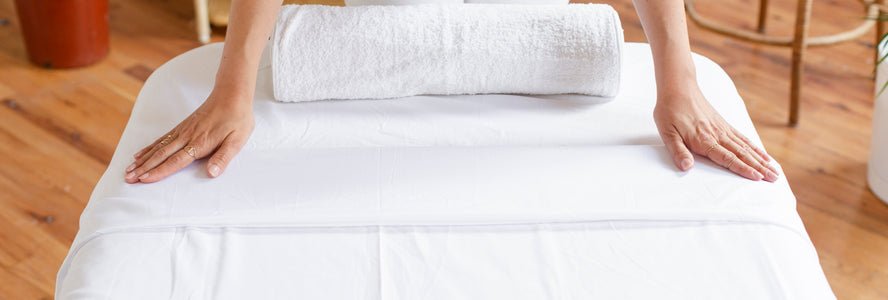Pregnancy Massage in NYC
PRESS Pregnancy (Side Lying)
The award-winning PRESS Modern Massage Prenatal session designed specifically to address lower back and hip pain, neck tension, leg cramping, swollen feet and ankles, and overall fatigue during pregnancy.
Each session is deeply satisfying and tailored to focus on the areas you’d like to address. Side-laying positions and supportive maternity pillows ensure comfort and relaxation. Take a deep breath and prepare to feel better!
IMPORTANT NOTE: if you are carrying multiples, or have any of the following, check with your doctor before booking:
- hypertension
- pre-eclampsia
- kidney or heart disease
- blood clotting disorder
- fever, swelling, shortness of breath, dizziness, nausea, or headaches the day of your massage
60 MIN
$195
$280
90 MIN
PRESS Pregnancy (Face Down)
This face-down session uses specialized maternity cushions to distribute weight evenly while giving your therapist complete access to tense back muscles, hips, and shoulders. Perfect for low-risk pregnancies up to 30 weeks, this technique delivers focused relief to your changing body.
Each session targets pregnancy-specific tension with symmetrical, thorough pressure that helps reduce sciatic discomfort, back pain, and shoulder tightness.
IMPORTANT NOTE: if you are carrying multiples, or have any of the following, check with your doctor before booking:
- hypertension
- pre-eclampsia
- kidney or heart disease
- blood clotting disorder
- fever, swelling, shortness of breath, dizziness, nausea, or headaches the day of your massage
60 MIN
$195
90 MIN
$280
Packages & Gift Cards for Pregnancy Massage in NYC
Comfort, elevated.
Soft flannel sheets, extra pillows & blankets and lavender eye pillows. PRESS is thrilled to offer Pregnancy Massage in NYC, with Prenatal massages in Williamsburg, Greenpoint, Union Square, Columbus Circle, and Long Island City. Our licensed massage therapists are certified in Prenatal Massage in NYC.


